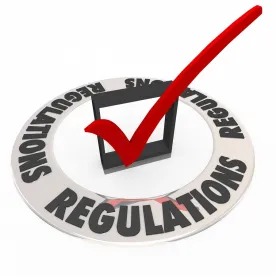US financial reform at the congressional and regulatory agency levels continues to move along—albeit more in fits and starts than in a blaze of big happenings. Below is a recap on where matters currently stand.
Congress
The US Senate financial regulatory reform bill, “The Economic Growth, Regulatory Relief and Consumer Protection Act” (S. 2155), about which we have previously written, remains on the Senate legislative calendar and now has 25 co-sponsors (12 Democrats, 12 Republicans, and 1 Independent who caucuses with the Democrats). No major actions on the bill have been taken. Given the bipartisan nature of the bill, it stands a reasonable chance of passing in the Senate (a vote will reportedly occur sometime in March) but will face strong opposition from Senator Elizabeth Warren and other progressive Democrats. There has been no indication from the House of Representatives thus far as to whether it will take up the Senate bill (if passed) or push for broader regulatory reform to align with its own financial regulatory reform bill.
The House passed the Financial CHOICE Act in June 2017, and the Senate held a hearing on the bill in July 2017. There has been no further action on the bill. In an interesting development, however, the House decided to take up a section of the CHOICE Act—Section 152 regarding operational risk capital requirements—as a separate, standalone bill, and that bill passed. HR 4296, which passed the House on February 27, would require all risk-based capital requirements for banks to be (1) based primarily on, and be sensitive to, the risks presented by the bank’s current activities; (2) determined under a forward-looking assessment of potential losses and not solely based on a bank’s historical losses; and (3) permit adjustments for qualifying operational risk mitigants. The future of HR 4296 in the Senate is uncertain, and although it had a Democratic co-sponsor, the bill was passed with only 19 votes from House Democrats.
The Administration and the Agencies
At the banking agencies, both the new Comptroller of the Currency Joseph Otting and the new Federal Reserve Vice Chair for Regulation (and Governor) Randal Quarles have expressed an interest in regulatory reform—but have taken very different tones.
Comptroller Otting has been circumspect in his public comments on regulatory reform and has yet to make an official speech or provide official testimony. In more informal comments, Otting has expressed an interest in focusing on potential updates to targeted areas that would primarily benefit community banks and other smaller banks—such as bank capital standards and Community Reinvestment Act reform. He also has indicated some receptiveness to fintech charters.
In contrast, Vice Chair Quarles has made public comments stressing the importance of the “efficiency” (i.e., the net cost), transparency, and simplicity of regulation. Vice Chair Quarles has stated that he intends to conduct a comprehensive review of the current requirements for capital, stress testing, liquidity, and resolution. In addition, newly appointed Federal Reserve Chair Jerome Powell stated in testimony before the Senate Banking Committee that he supports exempting from the Volcker rule banks that have less than $10 billion in total assets and that engage in a small amount of proprietary trading. That said, neither Federal Reserve Board official has suggested an interest in any radical departures from the Dodd-Frank Act regulatory and supervisory framework.
Finally, as we discussed in a previous post, Mick Mulvaney’s expressed intention in running the Consumer Financial Protection Bureau (CFPB) as its acting director is, in substance, to scale back on the more aggressive regulatory and enforcement positions and activities of his predecessor, and to reorient the agency’s priorities toward areas where there is demonstrated consumer concern (e.g., debt collectors).
The Bottom Line
Our view on the prospects of regulatory reform remains unchanged. We remain cautiously optimistic for limited, targeted changes to the Dodd-Frank Act. These changes likely will be intended primarily to provide relief to smaller banks or address other targeted issues where there may be some bipartisan agreement (e.g., raising the threshold level for Dodd-Frank systemically important financial institution regulation above the current $50 billion threshold).
Some of the broader regulatory reform efforts promoted by the Trump administration and the more conservative side of the Republican Party—including total Dodd-Frank repeal, elimination of the CFPB, and repeal of the Volcker Rule—are, in our view, political talking points rather than likely legislative or regulatory outcomes (in other words: not happening).
We also expect more substantial changes, if any, to come from the regulatory agencies themselves under their current statutory authority rather than from Congress, mostly due to the partisan gridlock in both the House and Senate. The discretion that the agencies have in interpreting and issuing regulations under their governing statutes gives them some degree of flexibility in implementing regulatory changes. Any such changes, however, are not likely to be radical in nature.
Overall, the outlook for changes to federal financial regulation and supervision in the near- to mid-term appears to fall into the realm of incremental rather than dramatic.




 />i
/>i


